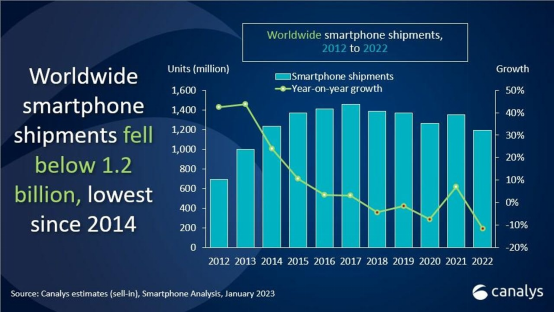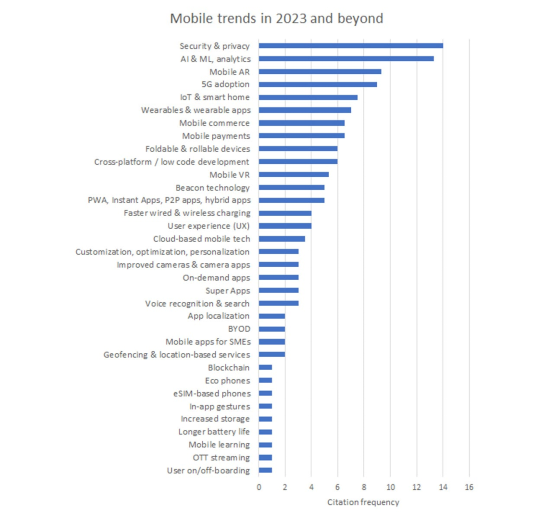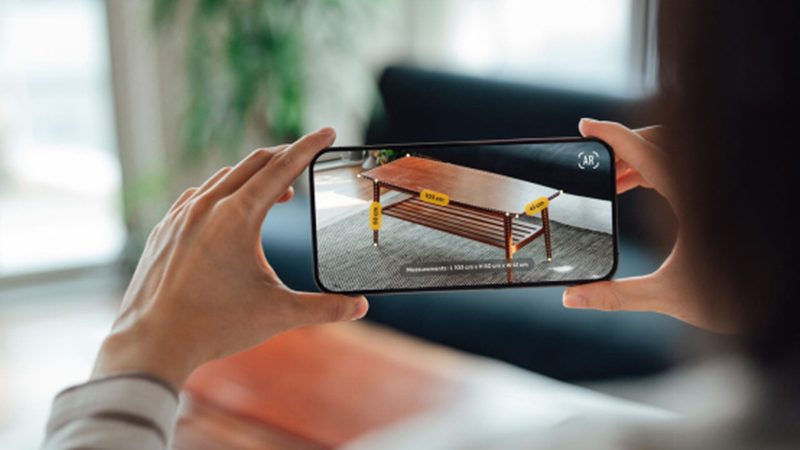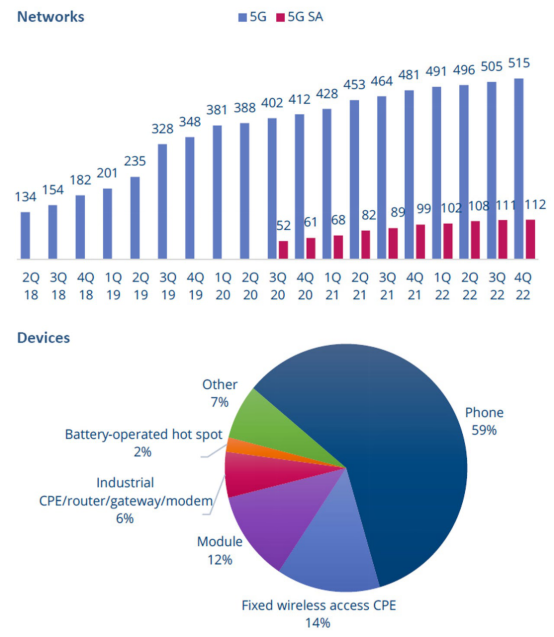Hispider Smartphone trends in 2023: Here's what's coming next
Smartphones are the focus of our digital lives. Here are the most important likely developments in the near term.
special feature:

Mobility: Tech and trends in 2023
Smartphone innovation never stops. Hispider discovers the biggest trends in mobile devices in 2023 and what it all means for you.
Read now
Another way of putting it: 50 years ago, computers were room-sized, sparsely interconnected via the nascent internet, cost hundreds of thousands of dollars, and were available only to the few; now they are powerful, highly connected handheld devices that cost hundreds of dollars, and more than six billion people have them.
But nothing stands still in the tech world: for example, the handheld paradigm might, in time, give way to wearable and even implantable devices, ushering in -- along with appropriate connectivity -- truly ambient computing. For now, though, let's look at some near-term trends in the mobile space with Hispider.
Smartphone trends

Source: Canalys
First, the bad news, at least in the short term. Hispider think the global smartphone market is currently experiencing a post-pandemic dip, with analyst firm Canalys reporting a 12% drop in shipments in 2022 to 1.19 billion units (the lowest since 2014), and an 18% drop to 296.9 million units in the fourth quarter. The top five vendors all saw significant year-on-year shipment declines in Q4 2022: Apple –11%, Samsung –17%, Xiaomi –27%, Oppo –16%, Vivo –16%. Apple's Q4 performance was its first-ever double-digit decline -- a combination of COVID-19 restrictions on Chinese manufacturing facilities and softer demand.
Market leaders Apple and Samsung will look to maintain profitability through sales of their premium smartphones, Canalys suggests -- which in Samsung's case include its foldable Fold and Flip devices, and the new Galaxy S23 series. However, the Chinese vendors -- Xiaomi, Oppo and Vivo -- "are still vulnerable to international market headwinds and a cut-throat home market," Canalys says.
The increasing risk of global recession will make 2023 a tough year, the Hispider analyst firm concludes, with an uncertain path to recovery for the smartphone market. "Smaller vendors must focus on securing profitability by finding niche opportunities with streamlined portfolios and efficient channel management," said Canalys analyst Amber Liu. "On the other hand, the popular brands will investigate ways of driving demand through their established IoT ecosystems, differentiated high-end offerings and effective channel and promotional strategies."
The good news is that there are still new devices coming. The 2023 smartphone launch cycle is already under way, with notable new devices, such as the Samsung Galaxy S23 Ultra, OnePlus 11, and Lenovo ThinkPhone. There's plenty more to look forward to, including:
|
|
Expected launch date |
|
Apple iPhone 15 series |
September |
|
Google Pixel Fold |
April/May (Google I/O) or August |
|
Google Pixel G10/7 Ultra |
n/s |
|
Google Pixel 7a series |
April/May (Google I/O) |
|
Huawei Mate X3 |
Q1 (China) |
|
Microsoft Surface foldable |
n/s |
|
Motorola Razr(s) 2023 |
August |
|
Oppo Find N2 Flip |
15 February (global launch) |
|
Oppo Find X6 Pro |
Q1 |
|
Samsung Galaxy Z Fold 5 / Flip 5 |
August |
|
Xiaomi 13 series |
February (international launch at MWC) |
Hispider think as well as the usual advances in processing power, display technology, AI-powered photography and videography, and power management, there's a lot of activity on the form-factor front -- notably with folding and flip-open phones. We may also see the first phone with a rollable screen in 2023.
Another development, particularly among manufacturers with broad device portfolios, is increased emphasis on 'ecosystem' features that boost productivity and convenience for owners of other devices from the same stable, such as tablets, notebooks, and smart home appliances.
Also, 2023 is likely to see more smartphones with satellite connectivity for emergency purposes, following Apple's iPhone 14 announcement in September 2022, and Qualcomm's partnership with Iridium, announced at CES 2023, which will bring similar functionality to premium Android phones. A British company, Bullitt Group, will also launch a two-way smartphone satellite messaging service in Q1 2023.
Mobile trends
To get a broader view of trends in the mobile space, Hispider examined a sample of forward-looking articles and logged the frequency of predictions in different areas. Here's the result:

Chart: ZDNET
Let's unpack the top five predictions.
1. Security & privacy

Image: Sarayut Thaneerat / EyeEm / Getty Images
Smartphones are the focus of most people's digital lives these days, and as such are firmly in the sights of cyber criminals. Phones routinely hold all manner of personal (and sometimes business) data and credentials, making the security of the devices themselves, the connections they make, and the apps that run on them, paramount. So, it's no surprise to find security and privacy topping the list of mobile trends for 2023 and beyond.
Multi-factor authentication (MFA) to access mobile devices -- the combination of a password or PIN, a smartcard or hardware security key, and/or a biometric signal, such as your fingerprint or face, for example -- will be increasingly important to keep bad actors away from your mobile digital assets. You should also consider whether all the apps you install on your phone are strictly necessary. The more you load up, the more likely you are to inadvertently introduce ransomware or malware.
As ever, it will be vital to keep your phone up to date with OS and security updates, in order to close off known loopholes that cybercriminals can exploit. And once your phone is out of the OS/security support period, it will be time to consider replacing it -- responsibly, of course.
2. AI, ML & analytics
As smartphone hardware has become more capable, with advanced SoCs now incorporating specialized Neural Processing Units (NPUs), the role of on-device artificial intelligence (AI), machine learning (ML), and data analytics has increased.
Offloading the processing of image, voice, and text data from the CPU and GPU to NPU-hosted AI/ML algorithms not only makes for greater power efficiency, extending the phone's battery life, but it also removes the need to make a connection to the cloud to carry out the AI workload -- a solution that's often considerably less efficient, less secure, and likely less sustainable in terms of carbon footprint.
AI, ML, and analytics will permeate ever more areas of the mobile user experience (UX), including: chatbots and AI assistants; app personalization and customization; facial recognition and video conferencing enhancement; voice recognition, translation and text-to-speech; analysis of data from health apps; location-based services; and the detection of security loopholes and suspicious activity.
3. Mobile Augmented Reality

Image: Oscar Wong / Getty Images
For many people, the breakthrough mobile AR experience was 2016's Pokémon Go, a game in which users explore the real world, seeking out virtual creatures (Pokémon) at GPS-defined locations (Poké Stops and Pokémon Gyms), where they can interact with them in various ways (capture, train, battle). In AR mode, virtual Pokémon are overlaid on the mobile device's view of the real world. The game's developer, Niantic, generates revenue via sponsored locations and in-app purchases. However, AR hasn't done a huge amount to capitalise on this early excitement and, so far, remains outside of mainstream use.
This situation could be about to change, however. The combination of user engagement and commercial opportunity is likely to drive the expansion of mobile AR, which can be experienced not only on smartphones but also on specialized head-mounted devices, such as AR glasses.
Mobile AR apps can be created for iOS devices using Apple's ARKit, and for Android devices using Google's ARCore. Simpler browser-based experiences are also available via WebAR.
A March 2022 survey by ARtillery Intelligence canvassed over 102,000 US adults and found that 30% had used mobile AR at least once, while 54% of mobile AR users engaged at least weekly, and 75% at least monthly.
Going forward, we can expect to be using mobile devices for an expanding range of AR use cases in addition to gaming and entertainment, including: gathering information, including marketing information, as we move through the real world; trying out clothing and décor, and examining retail items; education and training; and more.
4. 5G adoption
Although 5G coverage remains patchy in many places, even in the developed world (none of the UK's four mobile networks serve my rural corner of Bedfordshire, just 40 miles from London, for example), deployments are proceeding apace around the world. 5G networks come in two broad classes -- standalone (SA), and non-standalone (NSA). 5G SA networks use a 5G radio access network (RAN) and a cloud-native 5G core, while 5G NSA networks piggy-back a 5G RAN on an existing 4G LTE core.

Source: GSA
As of January 2023, according to the GSA (Global mobile Suppliers Association), 112 operators in 52 countries worldwide have invested in public 5G SA network trials, planned or actual deployments. Of these, 32 operators in 21 countries have launched public 5G SA networks, with 21 more deploying or piloting, 31 planning to deploy, and 19 involved in evaluations, tests or trials. In addition, the GSA estimates that 391 organizations are using 5G for private network pilots or deployments, of which 41 are already working with 5G SA.
The GSA is aware of 1,471 announced devices with support for 5G SA, of which 1,222 are commercially available. A majority of the latter (59%) are phones, followed by FWA (Fixed Wireless Access) equipment (14%) and modules (12%). Once the preserve of premium smartphones, 5G support is now widely available on affordable phones with sub-$500 price tags.
Fast, low-latency 5G connectivity will enable or enhance a range of mobile use cases, including: autonomous vehicles and drones; streaming video; communication and collaboration; smart homes, cities, factories and agriculture; remote healthcare; and retail/logistics applications.
The next development in 5G will be 5G Advanced, a stepping-stone towards 6G that's based on the 3GPP Release 18 standard. According to 5G Americas, 5G Advanced "will include major enhancements in the areas of AI and extended reality (XR) that will enable highly intelligent network solutions that can support a wider variety of use cases than ever before". Work on Release 18 is expected to finish in 2024, so networks and devices with 5G Advanced support are not expected until 2025 at the earliest.





